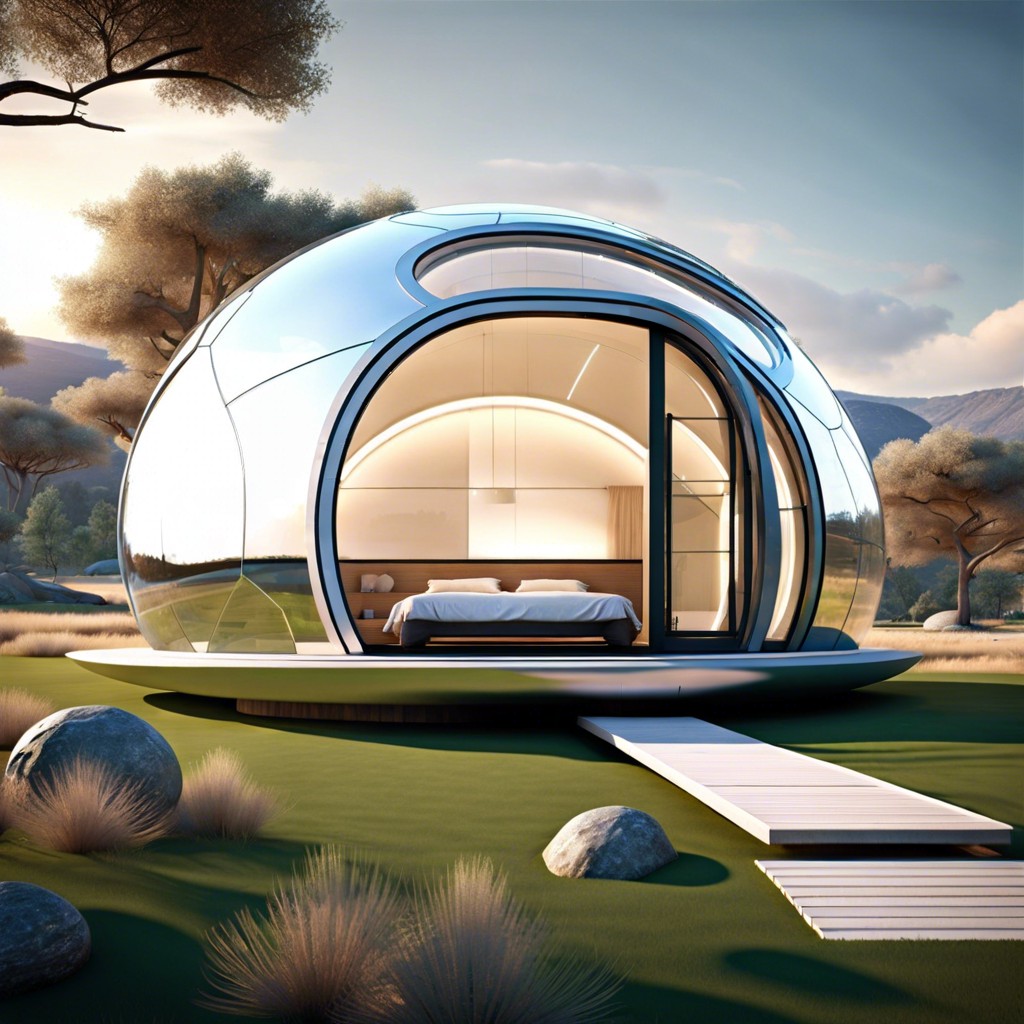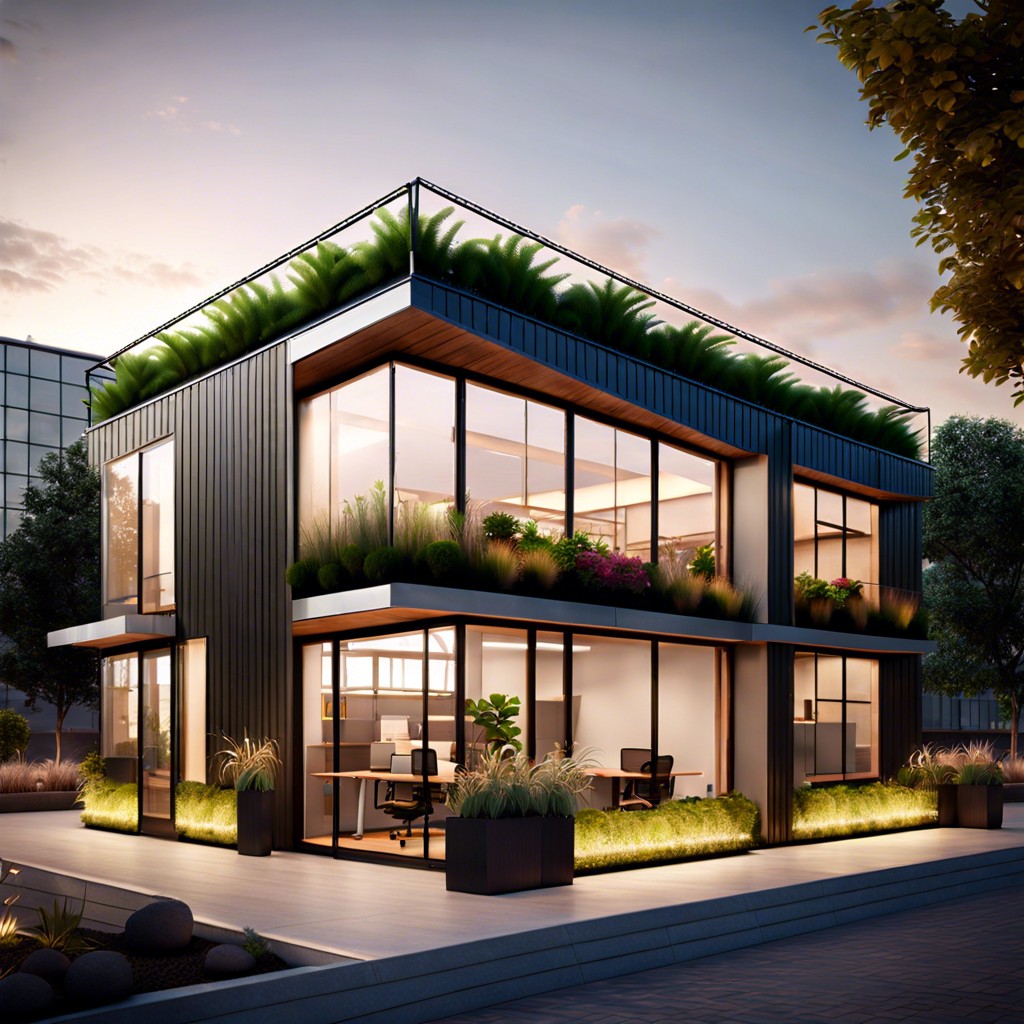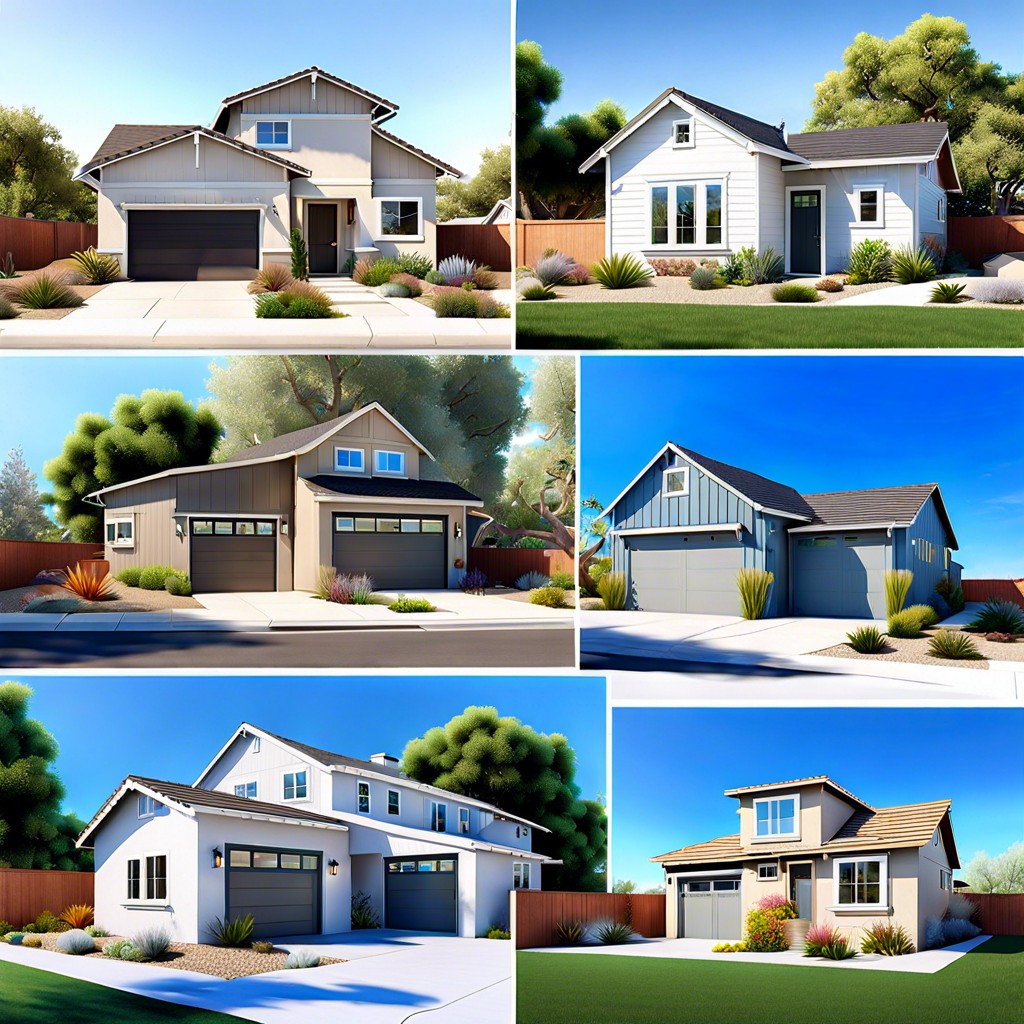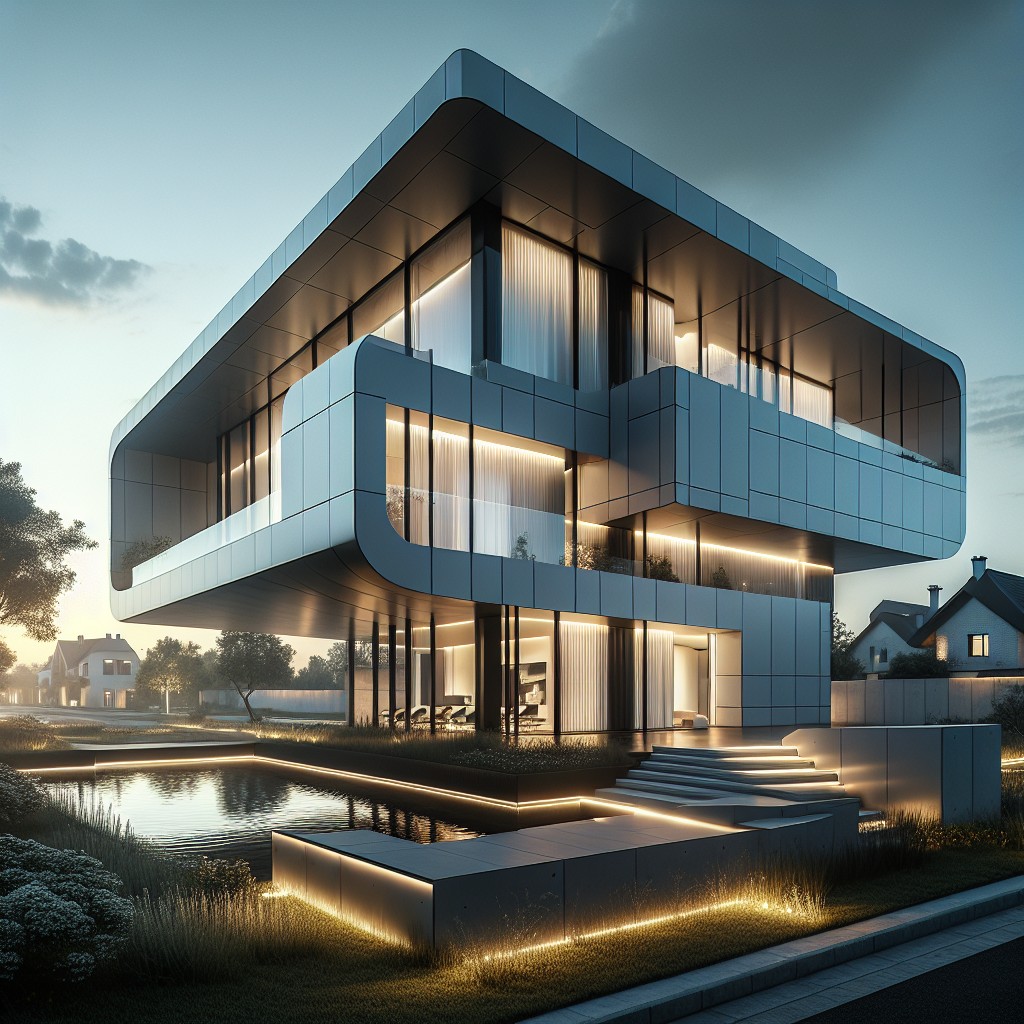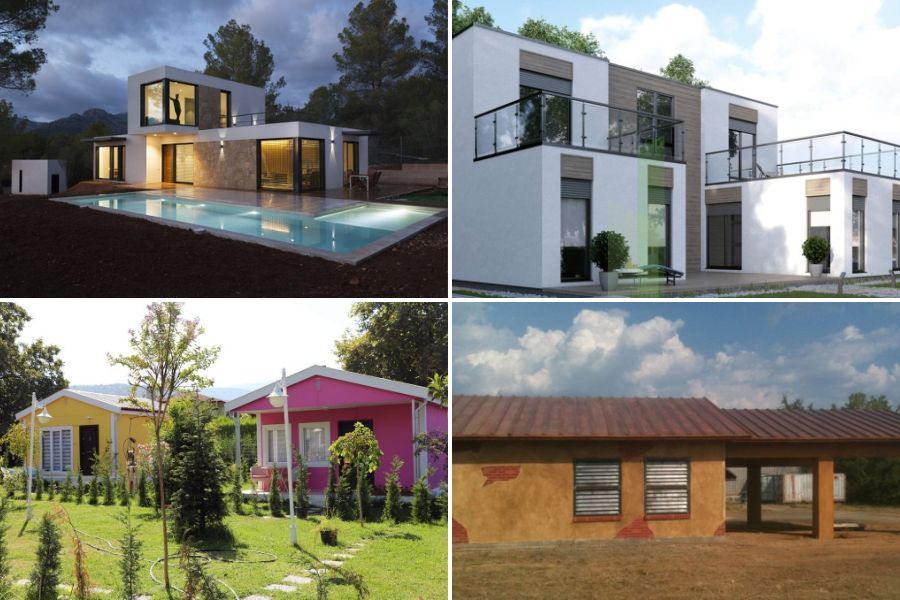Last updated on
Dive into this engaging exploration of prefab bunkhouses because they offer a unique, sustainable, and cost-effective solution for additional sleeping or living space.
Key takeaways:
- Prefab bunkhouses are modular structures for temporary or permanent living.
- They are used for remote worker accommodation and outdoor retreats.
- Benefits include cost-effectiveness and sustainability.
- Customizable options allow for scalability and utility integration.
- Considerations include dimensions, materials, utilities, and insulation.
What Is A Prefab Bunkhouse?

Prefab bunkhouses are modular structures, designed for quick assembly and use as temporary or permanent living quarters. These buildings are constructed off-site, in a controlled factory environment, which ensures a high level of quality and reduces construction waste. Once the components are complete, they are shipped to the intended location and assembled on a prepared foundation, streamlining the construction process considerably.
Ideal for a variety of needs, they serve as cost-effective lodging for workers in remote locations, comfortable sleeping accommodations for outdoor retreats, or even as additional living space for personal properties. Prefab bunkhouses come in various sizes and layouts, catering to the specific requirements of their occupants. With customization options available, these structures can be tailored to include essential utilities and desired amenities.
The modular approach also allows for scalability; units can be added as needed to accommodate more people. Their flexibility, combined with the sustainability of the building process, makes prefab bunkhouses an attractive solution for immediate and robust housing needs.
Why Are Prefab Bunkhouses Used?
Prefab bunkhouses serve a multitude of practical purposes due to their versatile design and efficient construction. Businesses often utilize these modular structures to provide onsite accommodation for workers in remote locations, eliminating the need for long commutes and enhancing productivity. Outdoor recreation enterprises, such as campgrounds and retreat centers, favor prefab bunkhouses for their cost-effectiveness and quick installation, thus offering guests a comfortable lodging experience.
Additionally, individuals may choose these units for personal use as guesthouses or temporary dwellings during home renovations, showcasing their adaptability. The compact nature of bunkhouses, combined with their ability to be relocated as needed, makes them an ideal solution for temporary or semi-permanent housing needs.
Benefits Of Adding A Prefab Bunkhouse To Your Property
Prefab bunkhouses serve as a versatile and cost-effective solution for accommodating guests or expanding living space. Their prefabricated nature ensures a quicker and less disruptive installation process compared to traditional construction.
Beyond convenience, these bunkhouses are also a testament to modern-day sustainability, often incorporating eco-friendly materials and energy-efficient designs. With the added benefit of transportability, these structures can be moved as needs change, granting a level of flexibility not easily achieved with permanent buildings.
Moreover, their modularity allows for easy expansion, should more space become necessary in the future. Opting for a prefab bunkhouse can enhance property value, offering potential for rental income or simply providing a charming retreat for family and friends.
Prefab Bunkhouse Ideas For Sleeping And Working
1. Convertible Desks: Maximize space by installing desks that can be folded up against the wall when not in use, transforming the work area into additional sleeping space.
2. Loft Beds: Elevate sleeping quarters with loft beds, freeing up the floor for workstations, storage, or recreational purposes.
3. Murphy Beds: Incorporate Murphy beds into your design. During the day, these can be stowed away, providing ample room for a home office or workshop.
4. Modular Furniture: Select modular furniture pieces that can serve multiple functions, such as a bench that doubles as file storage or a desk that can expand for collaborative projects.
5. Integrated Technology: Equip the bunkhouse with integrated tech features like built-in USB ports and hideaway charging stations to maintain functionality without sacrificing space.
6. Soundproof Partitions: Install soundproof partitions or curtains that can easily be drawn to separate the sleeping area from the work area, ensuring privacy and noise reduction for restful sleep.
7. Skylight Installations: Install skylights to provide natural light, creating an airy and productive workspace that transitions comfortably to a restful sleeping environment at night.
8. Sleeper Sofas: Opt for sleeper sofas in the common areas, which offer an additional sleeping option without compromising daytime living and working convenience.
9. Efficient Insulation: Proper insulation ensures the bunkhouse remains comfortable for both sleeping and working regardless of the outside weather, also promoting energy efficiency.
10. Outdoor Connective Spaces: Design patios or decks as extensions of the indoor space, suitable for outdoor work during good weather or for relaxation at the end of the day.
Specifications
Understanding the specifications of a prefab bunkhouse is crucial for ensuring it meets your needs. Here are key points that highlight the critical aspects of these specifications:
- Dimensions: Specific measurements dictate floor space and bunkhouse capacity.
- Materials: Quality of wood, metal, insulation, and other building materials affect durability and thermal performance.
- Design Standards: Compliance with building codes ensures safety and habitability.
- Utility Connections: Preparations for water, electricity, and sewage are considered for functionality.
- Insulation R-values: These values determine the energy efficiency and comfort of the bunkhouse in various climates.
- Weight: If the bunkhouse is designed for mobility, its weight impacts transport feasibility.
- Customization Options: Details on how the bunkhouse can be tailored to specific requirements, including layout changes and additional features.
Each of these points directly influences the bunkhouse’s performance, comfort, and suitability for its intended purpose.
Floor Plan
Selecting the right floor plan is essential for functionality and comfort in a prefab bunkhouse. Here are key considerations:
1. Occupancy: Determine the number of people the bunkhouse will accommodate to ensure enough sleeping spaces.
2. Privacy: Include partition walls or curtains for individual privacy, especially in shared sleeping areas.
3. Common Areas: Designate space for communal activities such as dining, lounging, or meetings.
4. Storage Solutions: Account for personal storage with built-in lockers or under-bed compartments.
5. Bathroom Facilities: Incorporate sufficient bathroom amenities, considering en suite or shared configurations.
6. Efficiency: Optimize the layout for energy efficiency with well-placed windows and doors for natural ventilation and light.
7. Adaptability: Ensure the design allows for future modifications or expansions as needs evolve.
8. Building Codes: Adhere to local regulations regarding minimum space requirements and emergency egress.
Walls
Efficient insulation is crucial for maintaining comfortable temperatures and lowering energy costs. Look for options like spray foam or fiberglass batts, which provide effective thermal barriers.
The materials for the structure itself can range from durable steel to eco-friendly wood, each offering different degrees of sustainability and aesthetic appeal.
Furthermore, wall panels may come in varying finishes allowing for a tailorable appearance, whether you prefer a contemporary look with smooth surfaces or a more rustic charm using textured cladding.
Soundproofing is another consideration, especially in communal living spaces, to ensure privacy and reduce noise transmission.
Always check the local building codes to ensure your choice meets the required standards for safety and efficiency.
Siding
Choosing the right exterior finish is crucial for both the durability and aesthetic appeal of your prefab bunkhouse. Options vary widely, but popular choices include:
- Vinyl siding, favored for its low maintenance, affordability, and a wide range of color options.
- Metal siding, which excels in durability and resistance to fire, often chosen for its sleek, modern look and minimal upkeep.
- Wood siding offers a classic, rustic charm and can be painted or stained; however, it requires more maintenance to prevent decay and insect damage.
- Fiber cement siding, a composite material that mimics wood, brick, or stone, is known for its resilience to adverse weather and low maintenance needs.
- Stucco provides a seamless and energy-efficient exterior with a variety of textures and color choices, though it may require skilled installation.
Consider local climate conditions, maintenance commitment, and desired aesthetics when selecting your siding to ensure your bunkhouse stands the test of time and reflects your personal style.
Roofing Material
Selecting the right roofing material for your prefab bunkhouse is vital for durability, energy efficiency, and aesthetic appeal. Metal roofs are a popular choice due to their longevity, resistance to extreme weather, and minimal upkeep. They reflect solar radiant heat, which can help in reducing cooling costs. Asphalt shingles are another option, offering a variety of colors and styles at a lower cost, though they may not last as long as metal.
Some eco-conscious individuals opt for green roofs, which are covered with vegetation. These help insulate the bunkhouse, manage stormwater runoff, and blend the structure into the natural surroundings. For those in snowy regions, a pitched roof design might be preferable, as it allows snow to slide off easily, reducing the load and potential for ice dams.
Whichever material you choose, ensure it complements the local climate and fits within your maintenance budget while adhering to any building codes or community regulations.
Workforce Bunkhouses
Designed to accommodate crews in remote locations, workforce bunkhouses provide a practical and comfortable living solution for industries such as construction, mining, oil and gas, and forestry. These structures are pivotal in ensuring that employees have access to essential amenities while working far from urban centers.
Key features often include:
- Multiple sleeping quarters with privacy partitions.
- Shared common areas for dining and relaxation.
- Integrated kitchen facilities for self-catering options.
- Ablution blocks that include showers, toilets, and laundry amenities.
- HVAC systems to maintain a comfortable indoor climate irrespective of outdoor conditions.
- Durable construction materials to withstand harsh environments and frequent relocation.
Customization options allow for scalability and adaptation to the specific needs of a workforce, accommodating varying numbers of employees and providing additional amenities, such as entertainment or fitness areas, as required.
Facilities for a Small or Large Workforce
Prefabricated bunkhouses offer versatile solutions tailored to the scale of any workforce, ensuring that both comfort and efficiency are maximized regardless of team size.
For smaller teams, compact units with essential amenities like sleeping quarters, a kitchenette, and a bathroom maximize space while fostering camaraderie.
Larger operations can benefit from modular designs that enable the addition of multiple units.
This modular approach provides private bedrooms, larger communal living areas, dining facilities, and multiple restrooms to accommodate an increased number of workers.
The adaptability of prefab bunkhouses guarantees that amenities can be scaled up or down to precisely meet the needs of the workforce, be they temporary, seasonal, or long-term staff.
Unit Floor Plans
Selecting the right unit floor plan is crucial for maximizing the functionality and comfort of your prefab bunkhouse. Here are some key considerations:
- Assess Your Needs: Begin by determining the number and type of rooms required. Are you looking for communal sleeping areas or individual rooms?
- Space Optimization: Look for designs that cleverly utilize space, offering storage solutions and flexibility.
- Flow of Movement: Ensure there’s a logical flow between areas—sleeping quarters should be quiet and separate from social spaces.
- Privacy vs. Openness: Decide on the balance between private and communal areas to foster interaction without sacrificing privacy.
- Utilities Integration: Consider how utilities such as plumbing and electrical systems will be incorporated within the layout for efficiency and ease of use.
- Expandability: Some floor plans allow for future expansion, providing the option to add modules as your needs grow.
- Customization: Many companies offer customizable floor plans to meet specific requirements, ensuring every square foot serves a purpose.
By carefully contemplating these points, you’ll be better equipped to choose a floor plan that caters to your needs, enhances the occupancy experience, and optimizes the use of space in your prefabricated bunkhouse.
Choose Your Size
Selecting the appropriate size for your prefab bunkhouse depends on your specific needs and the amount of available space. Consider the following:
Number of Occupants: Estimating the headcount will determine the number of bedrooms or sleeping quarters required.
Purpose of Use: A bunkhouse used for sleeping may necessitate less square footage than one designed to serve as a multifunctional space, including areas for living, working, or recreation.
Site Constraints: The dimensions of the land plot will influence the maximum size of the bunkhouse while ensuring it integrates well with the surrounding environment.
Future Needs: If you anticipate growth or increased usage, choosing a slightly larger size may be beneficial to avoid the need for expansion or a new unit down the line.
Budget: Larger bunkhouses may require a higher initial investment, so balance your spatial needs with your financial resources.
Remember, a well-proportioned bunkhouse can maximize comfort and utility while fitting into the context of your site seamlessly.
Choose Your Colors
Selecting the appropriate color scheme can transform a prefab bunkhouse from merely functional to a visually appealing part of your property. Consider these points when choosing your palette:
- Reflect the Environment: Harmonize with the surrounding landscape. Greens and browns complement forested areas, while light blues and whites suit coastal settings.
- Heat Reflection: Lighter colors reflect sunlight and can help to keep the interior cool, especially in warmer climates.
- Visual Size: Darker colors can make a structure appear smaller and more unobtrusive, while light hues tend to make it seem larger.
- Aesthetics: If the bunkhouse is near other buildings, you may want to match or complement the existing structures. Consistency in design creates a cohesive look.
- Personal Taste: Choose a color that you find pleasing; you’re more likely to be satisfied with the bunkhouse if it’s aesthetically appealing to you.
Remember that color can also impact mood and energy levels, so opt for hues that foster the atmosphere you wish to create within your bunkhouse.
The Bunkhouse Photo Gallery
Visual inspiration is a powerful tool in bringing your vision to life. A photo gallery dedicated to bunkhouses showcases a diverse range of designs, providing a real-world glimpse into how different materials, colors, and layouts come together.
These images offer practical examples of how space is utilized efficiently in sleeping quarters, communal spaces, and storage areas. Additionally, they illustrate how different settings, from remote work sites to cozy retreats, are served by these versatile structures.
Whether looking for a minimalist design or a fully equipped dwelling, the photo gallery helps in making informed choices about aesthetic appeal and functional requirements.
Table of Contents
